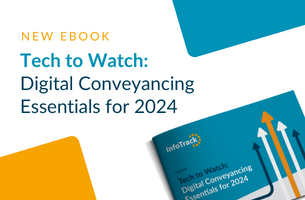
Online services: Consumers value transparency information
The rules on price transparency are dispelling consumers’ pre-conceptions that legal services are unaffordable, new research has claimed.
The findings also suggested too that fears some solicitor had that competitors would advertise falsely low prices in order to win business “appear to be unfounded”.
The study, part of a five-year project, was commissioned by the Solicitors Regulation Authority (SRA) to understand the early impact of the rules of price and services transparency that came into effect in December 2018, with further requirements coming into force in November 2019.
It involved online surveys of 3,539 recent users of legal services (2,029 individuals and 1,500 small businesses), detailed interviews with 120 individuals and 32 business owners/managers, an online survey of 524 law firms and 25 more detailed interviews, and interviews with key consumer, professional and regulatory organisations.
Some 77% of consumers and small businesses believed the information now being published had proven useful in helping them to make ‘good choices’.
Just 10% of consumers said that, after reviewing prices on law firm websites, they now thought instructing a solicitor was an unaffordable option; SRA research before the rules came in found that more than half of consumers assumed using a solicitor was unaffordable.
Potential clients used the information on price and service to choose which firms to contact for a conversation about their needs, before basing their final decision on who to instruct primarily on factors such as reputation, experience and recommendations.
The Legal Services Consumer Panel has previously found the role of digital comparison tools (DCTs) – such as review and comparison websites – were used minimally by people seeking legal advice, but the SRA survey found that 41% of consumers and 55% of SMEs were aware of legal services price comparison sites and 13% and 22% respectively had used them.
At the same time, only a small number of firms have signed up to them and the SRA said it would engage further with the profession and DCT providers “to discuss barriers that might be deterring firms”.
Though recent introductions, nearly 20% of consumers were already aware of the either the SRA clickable logo or Solicitors Register, and those who did found them useful.
The interviews with consumer groups found a broad welcome for the range of information being made available, but expressed concern that the language and jargon used on many sites could be difficult for people to understand.
The survey of law firms found continuing compliance failures, however, with 68% saying they published the required information on price and service – 18% of firms were publishing any price information online before the rules came in – while 92% displayed the SRA clickable logo and 80% published their complaints procedures.
“Evidence from our own web sweeps confirmed that the majority of firms are making an effort to follow the rules, but also suggested that many may not be meeting all the requirements,” the SRA said.
We reported last week that compliance with the rules was improving but a stubborn minority were facing disciplinary action.
Nearly one in three firms (28%) said they voluntarily published prices on services not covered by the rules, while 29% said they would recommend it as being good for business.
The SRA said: “The transparency reforms aim to achieve the type of change that can only happen over the longer term. As such, this first-year evaluation gives an early (and promising) view of the direction of travel but it will be some time before we fully understand the way the market is changing.”
“Our large-scale research has confirmed that there is a real public and small business appetite for better information about legal service providers.”
It argued that “debunking the misconception” about the cost of legal services “will not only help broaden access to legal services, but it should also help firms themselves compete for more business”, especially at a time when Covid-19 was compelling people to conduct even more of their day-to-day affairs online.
The research also found that 37% of consumers and 52% of small businesses were aware of the Legal Choices website. We reported earlier this month that the future funding and governance of the site – which helps people navigate the legal market – were under a cloud.
NOTE: This story originally included figures about the extent to which consumers and small businesses shopped around. However, the SRA subsequently contacted us to say that it had interpreted the research incorrectly and asked us to remove them, which we have done.














Leave a Comment